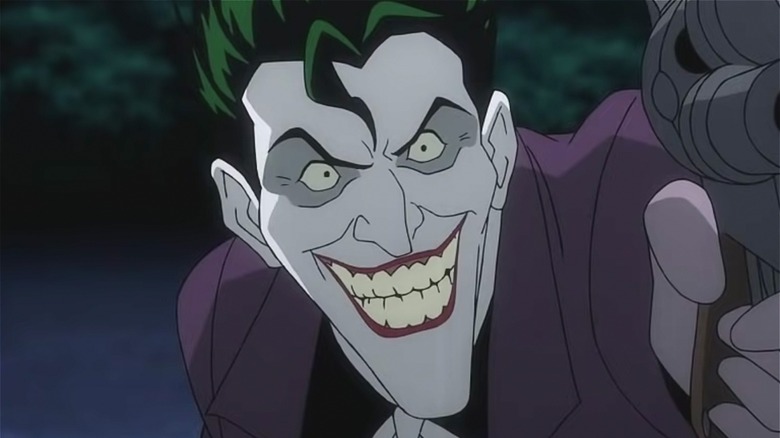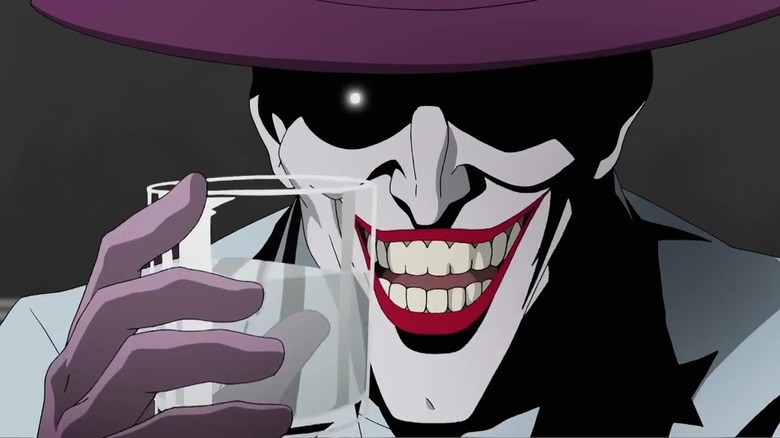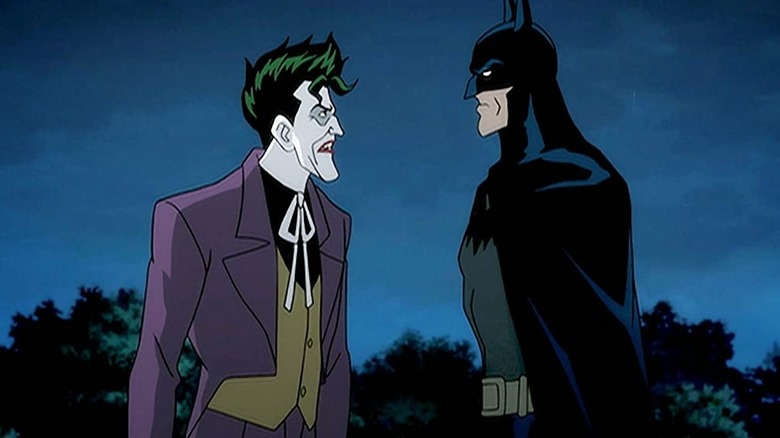The Ending Of Batman: The Killing Joke Explained
If you're even slightly a fan of the Dark Knight and have never heard the words "Batman: The Killing Joke," then you're either deaf or you just came out of a three-decade coma. DC published the original comic, written by Alan Moore and Brian Bolland, in 1988 and since then, it has left a major mark on both Batman comics and comic books as a whole. Diving deep into the psychology of both Batman and the Joker, the story illustrates just how similar, and how different, the two men truly are. To put it simply, if there was one book that defines how modern writers interpret the relationship between the Caped Crusader and Clown Prince of Crime, it's this one.
Despite the high praise that "The Killing Joke" comic received, it hasn't been totally immune from criticism. However, it's fair to say that the 2016 animated film adaptation gets the lion's share of hate. Though it can be viewed as a somewhat faithful adaptation in many regards, the film's depiction of Batgirl has been heavily criticized. That, combined with other issues, has led to the film receiving a 38% Tomatometer score on Rotten Tomatoes, and an enduring negative reputation.
Despite these different reputations, the two versions roughly share the same themes and, more importantly, the same ending. Steeped in ambiguity, the final moments of "The Killing Joke" call into question the sanity of these two enemies, and leave the reader wondering if their constant conflict has caused Batman to break his greatest rule.
Is one bad day really all it takes?
In the end, the biggest question that "The Killing Joke" asks is this: How much does it take for a man to lose his marbles? Is one bad day really enough for a mild-mannered, healthy individual to turn into a lunatic? In the case of the Joker, for whom a possible origin story is revealed in flashback, the answer is yes. After failing to make it as a comedian, the man who would become the Joker tries to support his family by aiding a break-in at the chemical plant where he once worked. Disguised as the Red Hood, the man is confronted by Batman but escapes through a chemical waste pipe, which leaves his skin bleached and his hair dyed green. This, combined with the sudden death of his family, drives him insane and turns him into the Joker as we know him.
From then on, the Joker becomes convinced that a single bad day is all it takes to make a man break. In order to prove this to Batman, he shoots Barbara Gordon (aka Batgirl), paralyzing her from the waist down, and kidnaps her father, Commissioner James Gordon, torturing him while showing him scarring images of his naked and injured daughter. In the end, Commissioner Gordon retains his sanity in the midst of the torture, disproving Joker's theory once and for all. However, that still leaves the question of what to do with the Joker after Batman catches him.
Did Batman kill the Joker?
The main lesson in the Joker's origin is that he really isn't very different from Batman. Just like Joker, Bruce Wayne's life was scarred by his own tragic origin and has left his mental health in a questionable state since then. In a certain sense, that may be why Batman abstains from killing. However, it's clear from the beginning of "The Killing Joke" that Batman doesn't see their feud ending any other way. This all culminates in the ending scene, where Batman desperately tries and fails to offer Joker a final chance at rehabilitation. When Joker refuses with a perplexing joke, the story ambiguously implies that Batman may have then killed his rival off-screen. Many people, including famed comic book author Grant Morrison, believe that Batman really did cross that line.
"That's what I love about it. Batman kills the Joker ... that's why it's called The Killing Joke," Morrison said on an episode of Kevin Smith's podcast, "Fatman on Batman." "The Joker tells the 'killing joke' at the end and Batman reaches out and breaks his neck ... and that's why the laughter stops ...the light goes out because that was the last chance of crossing that bridge," he explained.
Despite Morrison's analysis, the story, when read as an isolated tale in the DC multiverse, leaves Batman's final decision up to the reader's interpretation. Perhaps Bruce really did go through with it, potentially becoming the very thing he swore to oppose. Or, then again, maybe not.


